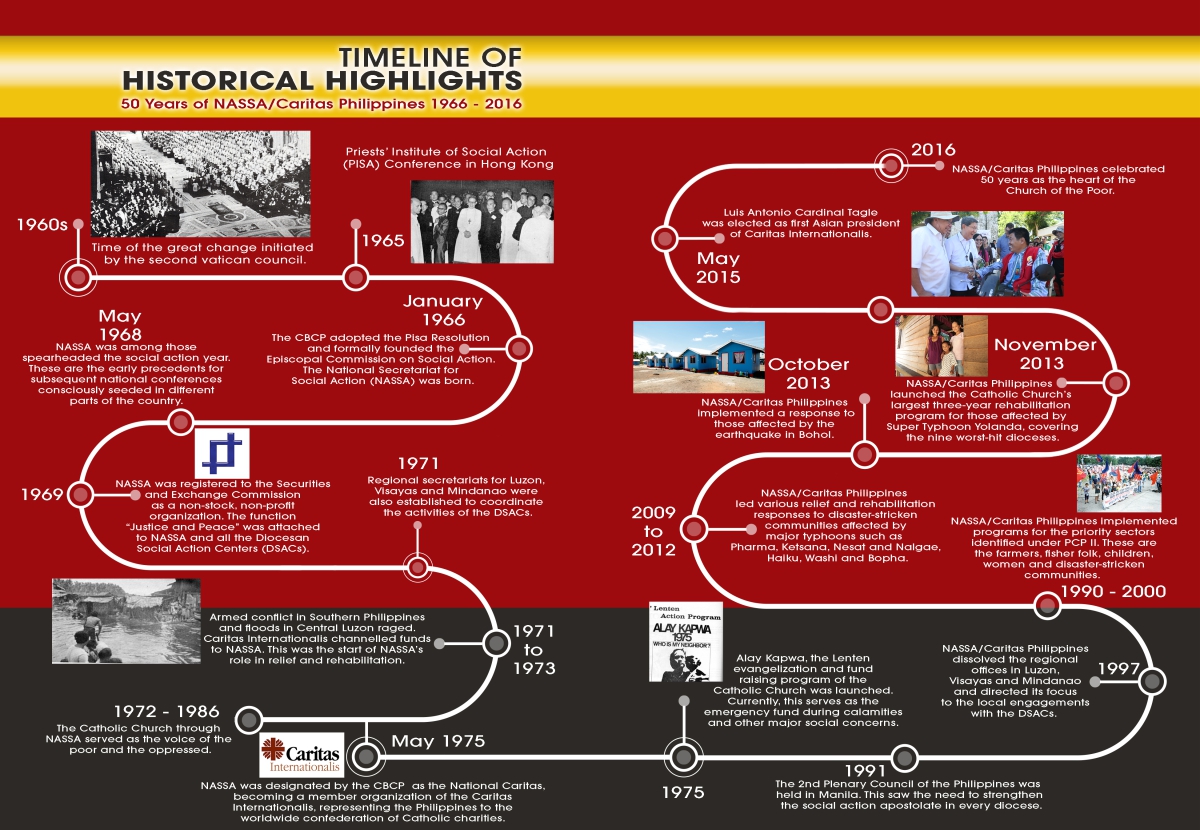Our History
Caritas Philippines was created by the Catholic Bishops’ Conference of the Philippines (CBCP) in 1966 as a response to the call of the Universal Church for renewal and social transformation. It is the social action arm of the CBCP, under the direction and supervision of the Episcopal Commission on Social Action-Justice and Peace (ECSA-JP).
Organically called NASSA, the “Justice and Peace” was attached to the institution’s name in 1969, after the Vatican created for the establishment of local counterparts throughout the world. The justice and peace component became relevant to the Philippine situation, especially at the height of Martial Law, because of the frequency of human rights violations committed during that time.
NASSA slowly spread into different regions (Luzon, Visayas and Mindanao) eventually giving birth to the Diocesan Social Action Centers (DSACs) all over the Philippines. Currently totaling 85, the DSACs are now responsible for coordinating social action activities in the parishes and Basic Ecclesial Communities (BECs).
NASSA, which began with an executive director, a secretary and a janitor, grew into a wide Church network. The regular holding of the National Social Action General Assembly (NASAGA), which started in 1969, gathers all diocesan social action directors, the ECSA-JP Board as well as the national office program officers. The NASAGA is the venue for discussion and approval of major resolutions relating to the network’s thematic programs, social services, and organizational development.

